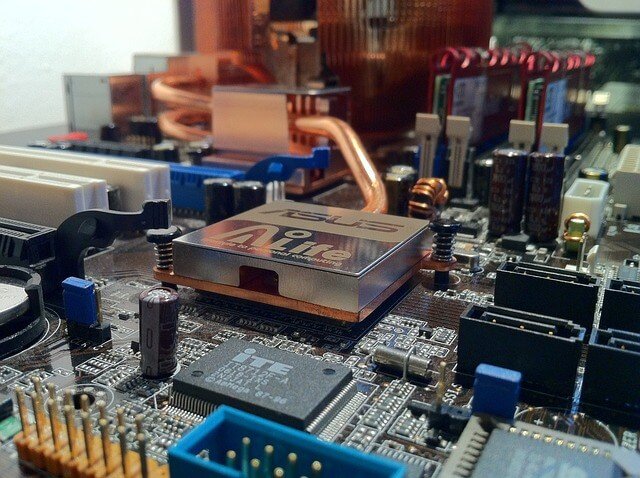Are you tired of hearing about the same old computer chips? Look no further than neuromorphic chips, which are revolutionizing the way we process and analyze data. These cutting-edge chips have been tested by some of the best in the industry and are quickly becoming a game-changer in artificial intelligence and machine learning. In this post, we’ll take a closer look at what makes these neuromorphic chips so special, and why they’re worth knowing about. So buckle up, because we’re diving deep into the world of next-generation computing!

IBM’s TrueNorth
As the world increasingly turns to artificial intelligence (AI) to solve complex problems, IBM is at the forefront of developing new hardware to enable these solutions. One such area of focus is neuromorphic computing, which mimics the way the brain processes information. IBM’s TrueNorth chip is one of the most advanced neuromorphic chips on the market, and it has been used in a variety of applications ranging from autonomous vehicles to medical diagnosis.
TrueNorth was developed through a collaboration between IBM Research and DARPA, and it is inspired by the human brain. The chip contains 5.4 billion transistors and can simulate up to one million neurons. It is also incredibly energy-efficient, using just 1/10,000th of the power required by a traditional CPU. This makes it ideal for use in battery-powered devices or for applications that require real-time processing.
One of the most impressive examples of TrueNorth in action is its use in an autonomous vehicle prototype developed by BMW. The car uses sensors to identify objects and then uses TrueNorth to determine how to navigate around them. This system is able to process data faster than any other currently available automotive solution, making it potentially life-saving technology.
Other potential applications for TrueNorth include early detection of disease, assistive technologies for those with disabilities, and improved robotics technologies. As IBM continues to refine this chip, we can expect to see even more amazing applications for it in the future.

Qualcomm’s Zeroth
Qualcomm’s Zeroth is a cutting-edge artificial intelligence technology that enables devices to learn and interact with their surroundings. Qualcomm’s Zeroth can be used in a variety of applications, including:
Intel’s Loihi
Intel’s Loihi is a neuromorphic chip that is designed to mimic the workings of the human brain. The chip is made up of a mesh of interconnected neurons that can learn and adapt to new inputs. The chip is still in development, but has already shown promise in applications such as pattern recognition and prediction.
How these chips are different from traditional processors
Neuromorphic chips are different from traditional processors in a number of ways. For one, they are designed to more closely mimic the workings of the human brain. This means that they can be far more efficient in certain tasks, such as pattern recognition.
Additionally, neuromorphic chips are far more scalable than traditional processors. This is due to their modular design, which allows for easy additions and subtractions of processing power as needed. This makes them ideal for use in large-scale projects, such as artificial intelligence and machine learning applications.
Advantages of neuromorphic chips
There are many advantages of neuromorphic chips. They are more efficient than traditional processors, they consume less power, and they are better suited for certain types of tasks.
Neuromorphic chips are more efficient than traditional processors because they mimic the way the brain processes information. This means that they can handle more information in less time.
Neuromorphic chips consume less power because they are designed to run on very low power levels. This is important for mobile devices and other devices that need to be energy-efficient.
Neuromorphic chips are better suited for certain types of tasks because they can learn and adapt to new situations. This makes them ideal for applications such as image recognition and pattern recognition.

Disadvantages of neuromorphic chips
Neuromorphic chips are still in their infancy and have a long way to go before they can be used in mainstream applications. Some of the disadvantages of neuromorphic chips include:
1. Limited functionality: Neuromorphic chips are still very limited in terms of the functions they can perform. They are not yet able to match the performance of traditional chips when it comes to more complex tasks.
2. High cost: Neuromorphic chips are currently very expensive to produce, which limits their commercial viability.
3. Power hungry: Neuromorphic chips require a lot of power to operate, which makes them unsuitable for use in portable devices.
4. Difficult to program: The programming model for neuromorphic chips is still under development and is quite complex compared to traditional chips. This makes it difficult for developers to create applications that make use of all the capabilities of these devices.

Conclusion
In conclusion, neuromorphic chips have the potential to be game-changing technology in a variety of areas. With their ability to mimic the brain’s behavior and process information quickly and efficiently, these chips are sure to revolutionize the tech industry as we know it. Whether you’re an AI developer looking for new tools or just curious about this groundbreaking technology, make sure you read up on neuromorphic chips so you can stay one step ahead of the curve.
See More: Coronavirus Is the Best Time to Take up 3 Technology Drive

